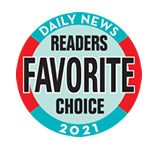- Home
- Programs[+]
- Getting Started[+]
- Why ACC[+]
- Locations[+]
- Newsroom[+]
- Contact Us
10/13/2023
If you enjoyed some of your math classes but ever wondered if you were actually going to use what you learned, you may be pleasantly surprised as you enter the healthcare field. As it turns out, engineers, accountants and computer programmers are not the only professionals who rely on math to perform their job duties.
In fact, math is an integral skill that is used on a daily basis in many healthcare professions.
While math used in the medical field may not be very complex (depending on your specific role), it’s important to remember that every calculation counts in healthcare. A minor math error can be dangerous and even life-threatening for patients—whether it be an incorrect dosage of medication or a mistake caused by an inaccurate recording/reading of a patient’s vitals.
Fortunately, training programs for healthcare occupations provide courses that teach and reinforce the type of math you need to know on the job. Plus, you can always come back to your study materials for reference if needed.Let’s walk through some examples of how math is used in healthcare. We’ll focus on the application of math in a handful of specific healthcare roles.
Pharmacy technicians and pharmacists are responsible for filling and dispensing prescriptions for patients. These professionals use pharmaceutical math to measure medication ingredient proportions for mixing compounded drugs and determining medication dosages.
Because the metric system is used in pharmacology, pharmacy techs and pharmacists often have to convert from one type of measurement to another, such as converting fluid ounces to milliliters.
In addition to making conversions, pharmacy professionals also need to factor in details such as dosage frequency and prescription duration (2 doses a day for 7 days) as well as the patient’s weight (especially for pediatric patients) when determining how much of a medication to dispense or how to advise the patient to take their medication.
Pharmacy technicians are additionally responsible for keeping their pharmacies stocked, which requires the use of math for ordering the correct quantities.
Common math concepts that pharmacy professionals must be familiar with include:
If this is a profession that interests you, check out American Career College’s Pharmacy Technician program. It can be completed in as little as nine months!
If you’re thinking of becoming a vocational nurse or registered nurse, a few of the many duties you may perform include taking, recording and monitoring patients’ vitals as well as preparing and administering medications.
All of these nurse duties require the use of math, including reading units of measurement, making conversions from one unit of measurement to another (i.e., converting fluid ounces to milliliters, which are then called cubic centimeters or “CCs”), measuring IV drip rates, using basic arithmetic to determine how much medication to give a patient and more.
In one video, a registered nurse (RN) employed in Phoenix, Arizona, emphasized the critical role math plays in his job:
“The greatest thing we use math for is when it comes time to give dosages of medication to our patients. We have to know the exact amount to give. Certain medications can have drastic effects on patients if you don’t get it exactly right.
The second thing is we measure all kinds of things such as a patient’s weight, a patient’s height. Based on our measurements of these things, the doctors then make their decisions on the next stage of treatment. So math is very, very important and it’s important to be precise.”
— Lincoln Eager, RN
Maricopa Medical Center
Watch the video by PBS LearningMedia.
Math concepts that come into play for nurses include:
Find out how you can begin training to become a nurse in Southern California, either through a Vocational Nursing program or an Associate Degree in Nursing program.
Optical technicians, also called opticians, are responsible for taking clients’ measurements when they come in for eyeglasses or contacts. Optical technician duties include using special devices to measure clients’ bridge and eye size, temple length, vertex distance, pupillary distance and the optical centers of their eyes.
Optical technicians then use the measurements along with the optometrist’s prescription to provide instructions for the optical lab for frame and lens fabrication. They are additionally responsible for checking glasses and lenses once they’re shipped to the store or optometrist’s office to ensure they meet all prescription and measurement specifications.
Optical technicians generally just need to know basic math skills (adding, subtracting, multiplying, dividing, fractions, etc.) whereas geometry, trigonometry and even calculus can be especially helpful for those who want to become optometrists or ophthalmologists. Optometry school and medical school tend to have heavy math prerequisite requirements.
For example, optometrists use math to identify sight lines and vision angles in eye exams, record the percentage of vision loss, write prescriptions, fit glasses/lenses and more. As for ophthalmologists, they rely on mathematical precision to effectively perform eye surgery!
Math concepts that are used in optical careers include:
Respiratory therapists (RTs) diagnose, treat and manage conditions that affect the lungs. They work with doctors and other healthcare providers to develop treatment plans designed to improve and maintain breathing and lung function.
RTs use math when calibrating equipment for breathing treatments, reading graphs and performing temperature conversions. They also use math for counting pulse and breathing rates, calculating medication dosages, and determining things like minute ventilation and the patient’s ideal body weight (IBW).
Here are some formulas and equations that are commonly used in the practice of respiratory therapy:
Minute Ventilation (VE)
VE = Respiratory Rate x Tidal Volume
Alveolar Minute Ventilation (VA)
VA = Respiratory Rate x (Tidal Volume – Deadspace)
Airway Resistance (Raw)
Raw = (PIP – Plateau Pressure) / Flow
Mean Airway Pressure (Paw)
Paw = (Inspiratory Time x Frequency) / 60) x (PIP – PEEP) + PEEP
Work of Breathing (WOB)
WOB = Change in Pressure x Change in Volume
What to know more? Check out this comprehensive list of RT formulas and calculations.
In summary, it’s important for respiratory therapists to be familiar with:
Interested in pursuing this as a career path? Find out how you can get started on respiratory therapy training in Southern California.
This is just a small glimpse into the realm of math application in the field of healthcare. There are also many other healthcare jobs where math is used on a regular basis, such as the jobs of radiologic technologists (mixing chemicals for the processing of x-ray images), surgical technologists (operating surgical equipment and keeping supplies stocked), medical billers (determining how much to bill insurance companies) and more.
In conclusion, if you’re thinking of pursuing a career as a healthcare professional, don’t just focus on the sciences—make sure you brush up on your math skills as well!
Located in Southern California, American Career College provides hands-on training for individuals who want to work in healthcare. We offer 12 different diploma and associate degree programs, with campuses located in Los Angeles, Ontario and
Share this story:
« Previous Post Next Post »* Required field

Ontario Campus: Voted Best Trade School in the 2021 Inland Valley Daily Bulletin Readers Choice Awards

LA Campus: Voted Favorite Career College in the 2021 LA Daily News Readers Choice Awards.

OC Campus: Voted Best Career College in the 2021 San Gabriel Valley Tribune Readers Choice Awards.
Personal Information you submit through our Sites, such as your name, address and other contact information, may be collected by American Career College for internal marketing and development purposes as well as to respond to your inquiry, complete a transaction for you, or fulfill other forms of customer service. You can choose not to receive marketing from us by "unsubscribing" using the instructions in any marketing email you receive from us.

